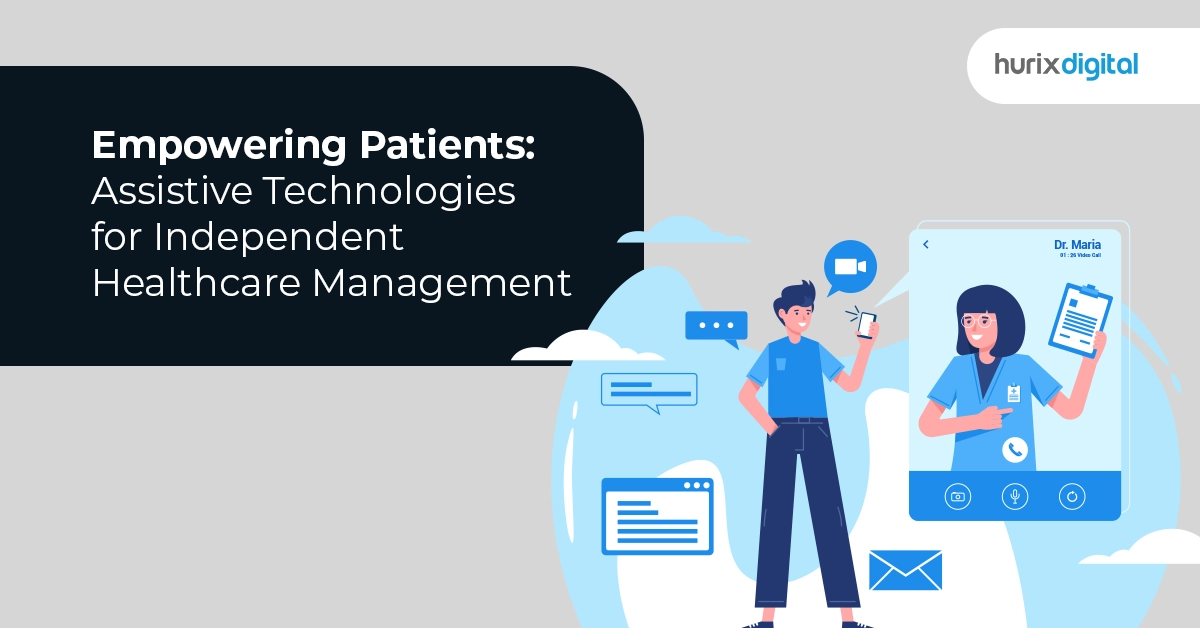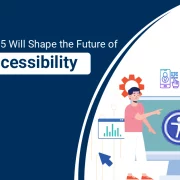
Empowering Patients: Assistive Technologies for Independent Healthcare Management
Summary
Explore assistive technologies that empower patients to manage their healthcare independently. This blog highlights innovations that enhance patient autonomy and engagement.
Healthcare assistive technologies are growing in demand as the world increasingly evolves into a more inclusive space. Assistive technologies in healthcare can be anything from devices to services that are designed to help individuals function.
Whether it is old-school innovations like wheelchairs, hearing aids, or glasses or new-age digital solutions like speech recognition or time management software, the demand for accessibility solutions in healthcare is rising.
Globally, more than 2.5 billion people need one or more assistive products. This means that there is a gap between the healthcare accessibility tools available and the actual demand for such services and products. This gap exists due to high costs, a lack of financing, availability, awareness, and trained personnel.
With an aging global population and a rise in noncommunicable diseases, an estimated 3.5 billion people will need assistive technology by 2050. It is high time we picked up the slack. So, in this article, we will discuss all there is to know about healthcare assistive technologies.
Table of Contents:
Understanding Healthcare Assistance Technologies
Healthcare assistive technologies are products and services that are designed to help individuals improve their functioning and, in turn, their independence. They can be anything from mobility aids to self-care, as long as the goal is to promote inclusion and participation.
From tangible items like wheelchairs, spectacles, prosthetic limbs, white canes, and hearing aids to digital solutions like time management software and captioning, assistive healthcare devices can take many different forms. People can live regular lives and be the greatest versions of themselves with the aid of this technology.
While some individuals may require healthcare accessibility tools temporarily, for others, it can be a way of life. Most people will need access to some kind of assistive technology at some point in their lives. Improving access to assistive technology is a step towards achieving the Sustainable Development Goals and ensuring that no one is left behind.
Also Read: Designing for All: The Evolution of Accessibility Standards in Hospitality
1. A11Y: Accessibility as a Global Standard
A11Y is a numeronym for “accessibility,” where ‘A’ is the first letter, ‘Y’ is the last, and there are 11 letters in between. A11Y has the goal of ensuring digital content is accessible to everyone, including those with disabilities. It is a legal requirement in many jurisdictions.
Worldwide, A11Y, of which accessibility solutions for healthcare are a part, finds recognition through the United Nation’s Sustainable Development Goals, or SDGs. The SDGs are part of an agenda whose goal is to build an inclusive world where nobody gets left behind by 2030.
A11Y is in line with 5 major SDGs: SDG 10 of reduced inequalities, SDG 4 of quality education, SDG 8 of a decent work environment and economic growth, SDG 3 of good health and well-being, and SDG 11 of sustainable cities and communities.
Furthermore, it aligns with the Web Content Accessibility Guidelines (WCAG) as set by the W3C.
2. Types of Assistive Devices in Healthcare
Before diving in further, let us understand the types of assistive devices used in healthcare:
- Mobility Aids: These are devices that help people with movement disabilities, such as scooters, walkers, wheelchairs, canes, crutches, prosthetic devices like limbs or arms, orthotic devices like knee braces, etc. Others, such as automatic page-turners, book holders, and adapted pencil grips, help the disabled perform daily tasks.
- Hearing Aids: As the name suggests, these devices help people hear more clearly. A similar purpose is served by transcription software.
- Visual Aids: glasses, contact lenses, magnifying glasses, or screen readers all qualify as visual aids.
- Cognitive Aids: These devices help people with memory, attention, or other related challenges in their thinking skills. These include devices like audio note-takers, educational software, and speech
All these devices serve a crucial role in helping people manage mobility concerns, hearing loss, low or no vision, and cognitive issues.
3. Benefits of Healthcare Assistive Technologies
Assistive technology helps people to live healthy, stay productive and independent, and spend their lives with dignity. In short, they have an array of benefits, such as:
- Improved Independence: People with disabilities often need constant assistance. Assistive healthcare devices and tools can allow them to live more independently and with dignity.
- Enhanced Communication: Disabilities can have a crippling impact on people’s ability to communicate. Devices such as speech-generative devices can prove to be a lifesaver in such situations.
- Increased Mobility: Devices like wheelchairs, walkers, and even prosthetics or orthotic devices help disabled individuals move around much more easily and independently.
- Better Quality of Life: By enabling individuals to perform tasks they were previously unable to do, these technologies greatly improve an individual’s quality of life.
- Greater Access to Education and Employment: For individuals with disabilities, devices such as text-to-speech or speech-to-text, among others, can greatly improve their ability to join mainstream education and the labor market.
- Reduced Healthcare Costs: By enabling self-care, these technologies can reduce healthcare costs associated with prolonged hospital stays.
- Increased Social Participation: As individuals find ways to move around and communicate more independently, their social participation automatically increases.
- Enhanced Safety: Devices like medical alert systems are a must for people with conditions that can cause safety hazards.
- Improved Mental Health: As their quality of life improves, people living with disabilities can live a more dignified life and participate in society. It improves their mental state as well.
- Increased Productivity: As more people participate in the labor force and their needs are met through assistive technology, a rise in productivity can be observed in workplaces.
- Promotion of Human Rights: The UN recognizes access to assistive technology as a human right that aims to enable participation in society for the disabled.
- Improved Caregiving: Healthcare accessibility tools reduce the burden on caregivers, leading to a less stressful and more fulfilling range of human connections.
Also Read: Cognitive Disability: The Next Frontier for Web Accessibility
Opening Up Accessibility: The Technical Key
Healthcare assistive technologies are crucial in independent healthcare management as they empower patients to manage their health conditions effectively. Whether you are a caregiver, an individual, or even an organization that deals with people with disabilities, now is the right time to invest in supportive healthcare tools and services. But if you don’t know where to start, Hurix Digital has all the answers.
Hurix Digital creates products and services personalized to enhance digital accessibility in healthcare. They offer software that can not only help day-to-day functioning, but it can also help with the training of professionals in the field of accessibility. Their healthcare assistive technologies are both WCAG and ADA (Americans with Disabilities Act) compliant.
With Hurix Digital by your side, you can easily bridge the gap between disability and data today!

Vice President – Digital Content Transformation. He is PMP, CSM, and CPACC certified and has 20+ years of experience in Project Management, Delivery Management, and managing the Offshore Development Centre (ODC).



